Hoi An, a charming old city in Vietnam, is famed for its ancient town architecture, vibrant lanterns, and peaceful riverside. A UNESCO World Heritage Site, it showcases Chinese, Japanese, and European influences. Visitors explore its history, bustling markets, and delicious local cuisine. Stroll through narrow streets, take a boat ride on the Thu Bon River, and soak in the welcoming atmosphere. Hoi An is a delightful destination to experience at a relaxed pace.
History
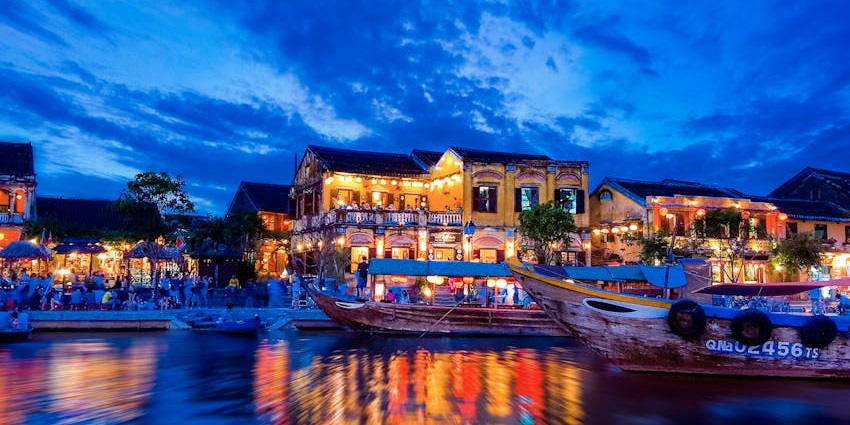
Hoi An has a long history of more than 2,000 years. Long ago, it was a busy trading port where people bought and sold goods. From the 15th to the 19th century, it was one of the most important trading places in Southeast Asia. Merchants from China, Japan, India, and Europe came to trade silk, spices, and ceramics. The Japanese Covered Bridge, built in the 16th century, still stands as a reminder of this past. Hoi An is famous today for its well-preserved old houses, temples, and cultural sites.
Location
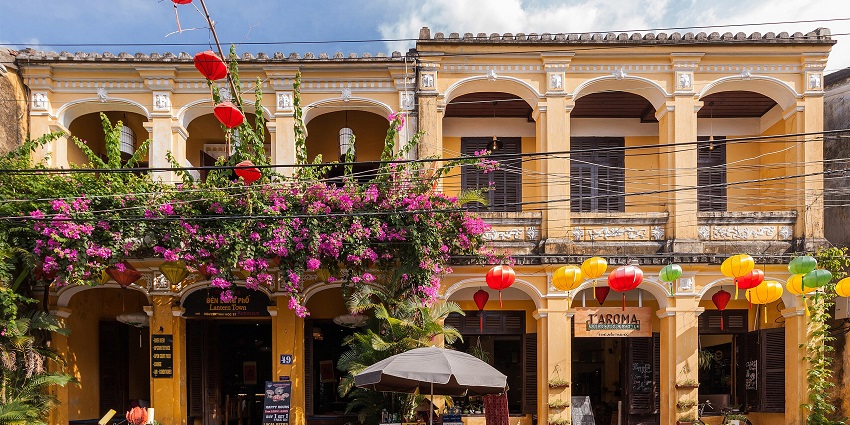
Photo: Supanut Arunoprayote / Wikimedia Commons
Hoi An is a town in central Vietnam, about 30 km south of Da Nang. It is in Quang Nam Province and is close to the South China Sea. The town has different areas, but the most famous is the ancient town. This area has old buildings, small streets, and a peaceful feel. Hoi An is also near beaches, rivers, and green fields, which make it even more beautiful.
How To Reach
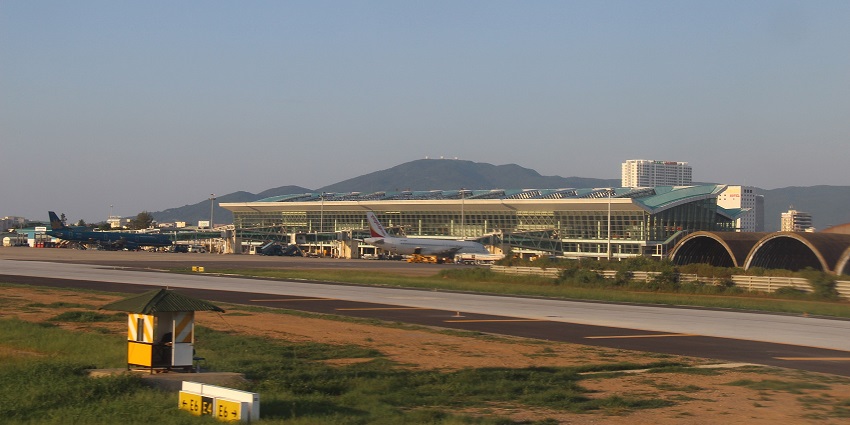
Photo: Gary Todd / Wikimedia Commons
Reaching Hoi An is simple, as it is well-connected to other cities in Vietnam. Here’s how you can get there:
By Air: The nearest airport to Hoi An is Da Nang International Airport, about 30 km away. The airport has direct flights from Hanoi, Ho Chi Minh City, and international destinations like Bangkok, Singapore, and Kuala Lumpur.
By Train: Hoi An has no railway station, but travellers can take a train to Da Nang Railway Station, which is well-connected to major Vietnamese cities. From there, a taxi or bus can take you to Hoi An in less than an hour.
By Road: Visitors can also reach Hoi An by bus or private car from cities like Hue, Da Nang, or Ho Chi Minh City. Many tour companies offer comfortable travel options.
Best Places To Visit In Hoi An
Discover the best places to visit in Hoi An, featuring must-see attractions that capture the city’s charm and heritage:
1. Japanese Covered Bridge
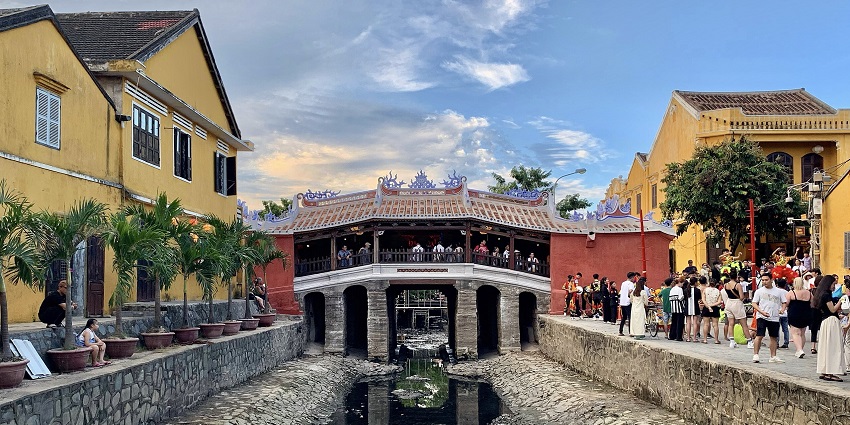
Photo: Chainwit. / Wikimedia Commons
The Japanese Covered Bridge is a famous place in Hoi An. Japanese traders built it in the 16th century to connect two parts of the town. The bridge has a special design with wooden carvings and a small temple. It is a great place to take photos and learn about history. The area around the bridge is quiet and beautiful, making it a nice place to visit. The old-style buildings and peaceful setting make it even more special. Many visitors come here to see the bridge and enjoy the view.
Nearest Airport: Da Nang International Airport
2. Hoi An Ancient Town
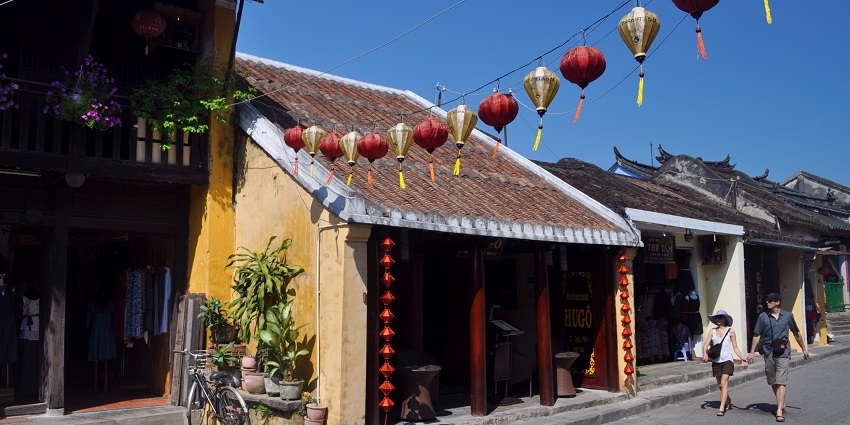
Photo: David McKelvey / Wikimedia Commons
The main part of Hoi An is its ancient town, which has old buildings, temples, and many colourful lanterns. Walking through the streets feels like going back in time. There are no cars, so it is quiet and easy to explore. Visitors can see traditional houses, small museums, and busy markets. The town looks beautiful at night when the lanterns light up the streets, making everything look magical. The peaceful streets, warm lights, and friendly people make it a special place to visit.
Nearest Airport: Da Nang International Airport
3. An Bang Beach
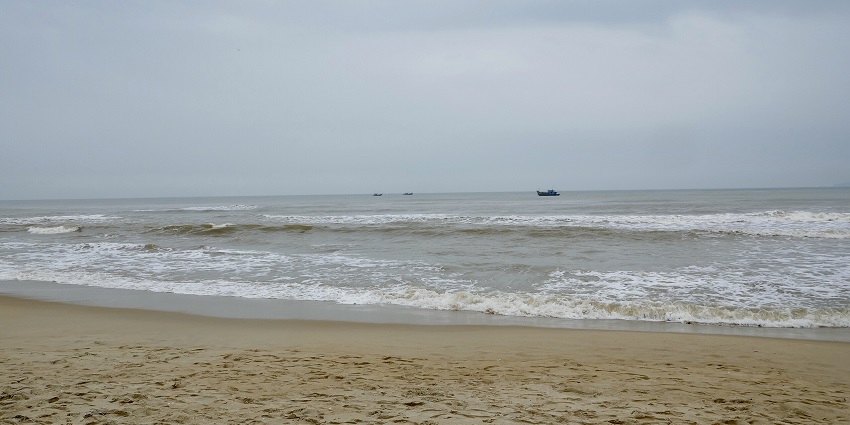
Photo: Isabell Schulz / Wikimedia Commons
An Bang Beach is a peaceful place near Hoi An where people can relax. The beach has soft sand and clear water, making it perfect for swimming and sunbathing. There are many small restaurants by the beach where visitors can enjoy fresh seafood. It is also a great place to watch the sunset and feel the cool sea breeze. The calm and quiet surroundings make it a good spot for those who want to rest and enjoy nature. Many people come here to take a break from the busy city and spend time by the sea.
Nearest Airport: Da Nang International Airport
4. Tra Que Vegetable Village
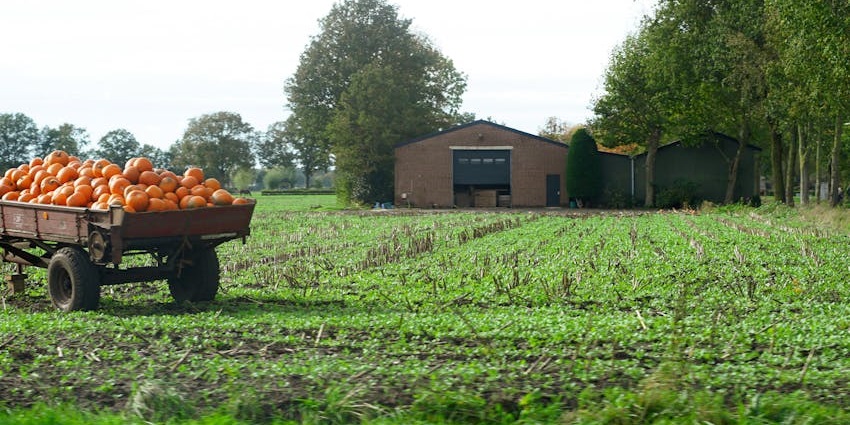
Photo: Duygu / Pexels / Image For Representation Only
Tra Que Vegetable Village is a quiet farming village near Hoi An. It is a nice place to learn about organic farming and see how farmers grow fresh vegetables. Visitors can also try farming by planting and watering the crops. The village has clean air, green fields, and friendly people. It is also known for its herbal drinks and tasty Vietnamese food made with fresh ingredients. The peaceful surroundings and simple village life make it a great place to visit.
Nearest Airport: Da Nang International Airport
5. My Son Sanctuary
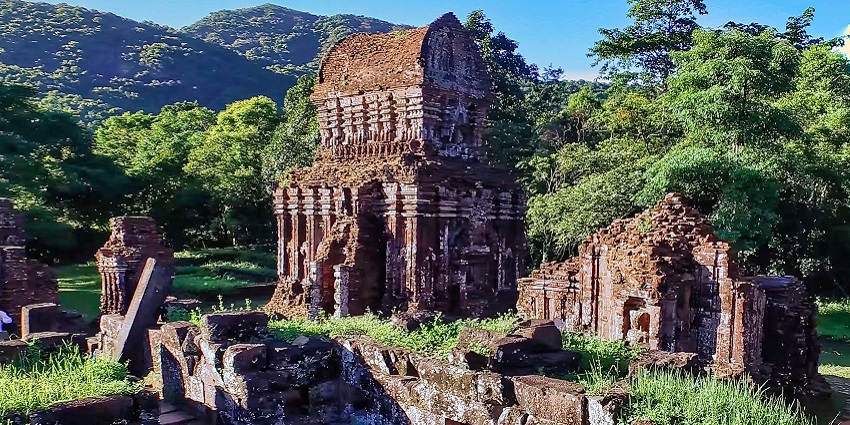
Photo: Ms Sarah Welch / Wikimedia Commons
My Son Sanctuary is a very old temple area about 40 km from Hoi An. Long ago, it was part of the Champa Kingdom and was built in the 4th century. The temples are made of red bricks and have beautiful carvings. It is now a UNESCO World Heritage Site. People who love history and culture will enjoy visiting this place. It is a quiet and special place to learn about Vietnam’s past. Walking around the ruins, you can see how people built these temples many years ago.
Nearest Airport: Da Nang International Airport
Where To Stay
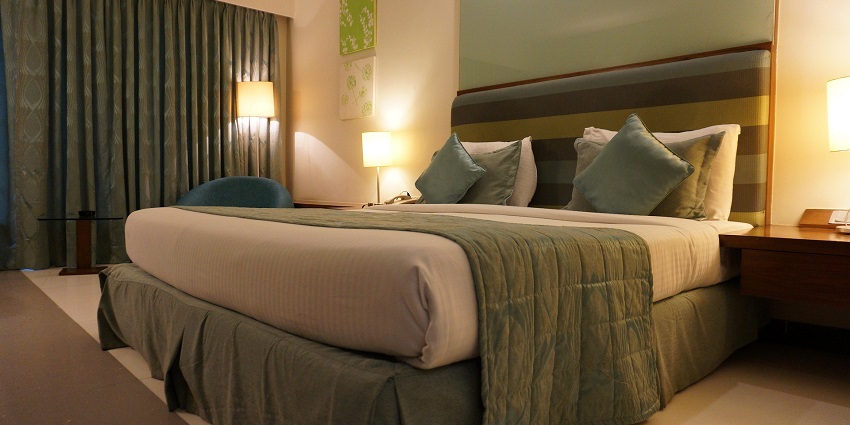
Photo: bottlein / Pixabay / Image For Representation Only
Hoi An has many places to stay for all budgets. There are luxury resorts near the beach for those who want a comfortable stay and simple and affordable homestays for travellers looking to save money. Many hotels in Hoi An have traditional Vietnamese designs, lovely gardens, and river views, making the stay more relaxing. Whether you want a fancy hotel or a simple guesthouse, you can find a good place to stay in Hoi An.
Where To Eat

Photo: adoproducciones / Pixabay / Image For Representation Only
Hoi An is known for its tasty food, and there are many dishes you should try. Cao Lau is a special noodle dish with pork and fresh herbs. Banh Mi is a Vietnamese sandwich with meat, vegetables, and tasty sauces. White Rose Dumplings are soft dumplings made with shrimp and served with a delicious dipping sauce. Many restaurants in Hoi An also serve fresh seafood, street food, and vegetarian meals.
Best Time To Visit
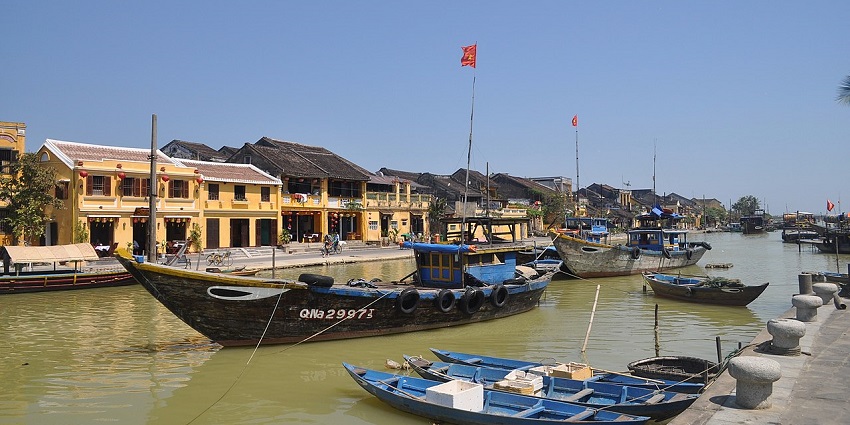
Photo: David McKelvey / Wikimedia Commons
The best time to visit Hoi An is from February to April and September to November. During these months, the weather is not too hot or cold, making it nice to walk around and explore the city. From February to August, the dry season is good for going to the beach and enjoying outdoor activities. From September to January, the rainy season makes everything green and fresh, but sometimes there is flooding. If you like sunny days, the dry season is better for a peaceful visit.
Other Factors To Consider
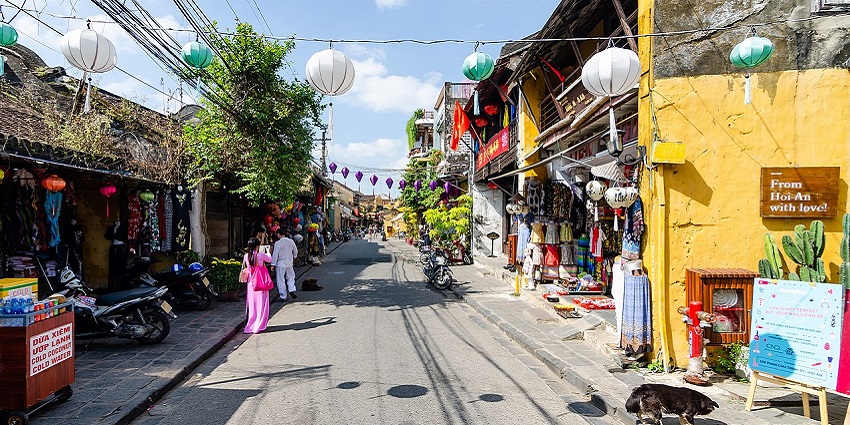
Photo: Steffen Schmitz / Wikimedia Commons
Average Cost Of The Trip
The Average Trip Cost to Hoi An, Vietnam, is not very expensive. Visiting the Hoi An Ancient Town costs about ₹500 for a ticket, which lets you see many old and important places. If you join a guided tour, the price can be between ₹1,600 – 4,000 per person, depending on what is included, like food tasting or a boat ride. Hotels are available for different budgets. A simple hostel room can cost around ₹800 per night, while a fancy resort can cost more than ₹8,000 per night.
Tips For Travellers
- Dress modestly when visiting temples and historical sites, and respect local customs.
- Visit in the early morning or late afternoon to avoid crowds and enjoy the magical lantern-lit atmosphere in the evening.
- Always ask for permission before taking pictures of locals, especially street vendors and artisans.
- Take a boat ride on the Thu Bon River or visit nearby An Bang Beach for a relaxing escape.
- Hoi An’s climate can be humid, so drink plenty of water while exploring the town.
Hoi An is a beautiful place with history, culture, and nature. You can walk through old streets, taste delicious food, or relax on the beach. It is a perfect place for all kinds of travellers. A trip to Hoi An will be a wonderful experience. If you are visiting Hoi An, do not miss Hoi An. Plan your trip today with TripXL for the best travel experience!
Cover Photo: Supanut Arunoprayote / Wikimedia Commons


 WhatsApp
WhatsApp
 Twitter
Twitter









